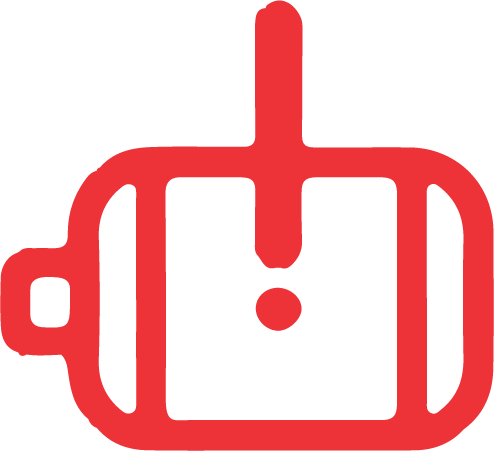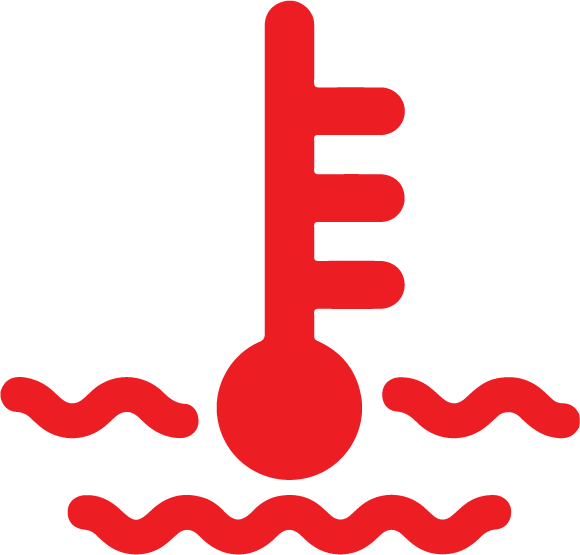Correct as at 26th April 2024. It may be superseded at any time.
Extract taken from: Vehicle Inspection Portal > VIRMs > In-service certification (WoF and CoF) > Heavy vehicles > Miscellaneous items
13 Miscellaneous items
13-1 Engine and transmission
Reasons for rejection
Condition
1. Refer to general vehicle pages.
2. A device fitted to a vehicle to restrict the field of swing of a driveshaft in the event of driveshaft failure is:
a) missing, where there is evidence that one was originally fitted, or
b) not securely attached, or
c) cracked, or
d) significantly deteriorated or damaged so that it is unlikely to prevent the driveshaft from striking the ground, chassis or floor in the event of driveshaft failure, or
e) showing evidence of contact with the driveshaft.
Modification
3. A modification or repair affects the engine or transmission and:
a) is not excluded from the requirements for HVS certification (Table 13-1-2), or
b) the modification is not for the purpose of law enforcement or the provision of emergency services, or
c) is missing proof of HVS certification, ie the vehicle has been modified or repaired, and
i. no LANDATA record has been entered, or
ii. no valid LT400 form from an HVS certifier of category HVEC or HMCD has been presented.
Table 13-1-2. Requirements for HVS certification
HVS certification is required | HVS certification is not required |
|---|---|
1. Significant work involving: a) relocation of components b) fitting of components that are not identical to OE components c) modification of components. | 1. Any modification or repair likely to have been carried out before 1 January 1997 (modifications and repairs before this date generally required certification but for inspection purposes no evidence of this is required). 2. Any repair or modification not listed in the left-hand column unless the vehicle inspector considers that certification is required because the modification or repair has affected the vehicle’s safety performance (a second opinion from an expert may be needed, eg the manufacturer’s representative, or a reputable workshop). |
Summary of legislation
Applicable legislation
Permitted equipment
1. The vehicle may be fitted with a device to restrict the field of swing of a driveshaft in the event of driveshaft failure.
Condition
2. The transmission must:
a) be within safe tolerance of its original condition, and
b) have adequate strength and performance characteristics for the conditions and loading for which the vehicle was constructed.
3. A device fitted to a vehicle to restrict the field of swing of a driveshaft in the event of driveshaft failure must be within safe tolerance of its original condition.
Modification
4. A modification or repair that affects the engine or transmission must be inspected and certified by an HVS certifier of category HVEC or HMCD unless the vehicle:
a) excluded from the requirement for HVS certification (Table 13-1-2), and
b) has been inspected in accordance with the requirements in this manual, including those for equipment, condition and performance.
Page amended 1 April 2023 (see amendment details)
13-2 Fuel system
Reasons for rejection
Condition
1. There is a noticeable fuel leak from the fuel system.
2. There is corrosion damage (Note 1), cracking or other damage within 150mm of a tank mounting.
3. The security of the fuel tank is affected by:
a) corrosion damage (Note 1) insecure or loose tank mountings.
4. A fuel line is insecure or loose so that it is likely to be damaged during normal use of the vehicle.
5. A fuel pipe is severely damaged or excessively corroded.
6. A fuel hose is damaged or perished.
7. The fuel pump is insecure.
8. The fuel filler cap or capless fuel filler seal is missing, insecure or likely to allow fuel spillage when the vehicle is in normal use.
9. The fuel tank is fitted with a ‘temporary use’ fuel filler cap.
Modification
10. A modification affects the fuel system, and:
a) is not excluded from the requirements for LVV specialist certification (Table 13-2-1), or
b) is missing proof of LVV specialist or accepted overseas certification, ie:
i. the vehicle is not fitted with a valid LVV certification plate, or
ii. the operator is not able to produce a valid modification declaration or authority card, or
iii. the vehicle has not been certified to an accepted overseas system as described in Technical bulletin 13.
Note 1
Corrosion damage is where the metal has been eaten away, which is evident by pitting. The outward signs of such corrosion damage is typically displayed by the lifting or bubbling of paint. In extreme cases, the area affected by corrosion damage will fall out and leave a hole.
Table 13-2-1. Modifications that do not require LVV certification
Fitting of or modification to: | LVV certification is not required provided that: |
|---|---|
| Electric fuel pump | The electric fuel pump:
|
Fuel lines | The fuel lines are:
|
| In-line fuel filter | The in-line fuel filter is:
at least 100mm from a catalytic converter. |
Note: All other fuel system modifications require certification
Fitting of or modification to: | LVV certification is never required: |
|---|---|
Any modification for the purposes of law enforcement or the provision of emergency services |
|
Summary of legislation
Applicable legislation
Condition and performance
1. Fuel tanks, fuel lines and associated components must be:
a) securely mounted, and
b) made of suitable materials, and
c) in good condition, and
d) free from significant leaks, and
e) positioned so that the risk of mechanical damage or heat gain is minimised.
Modification
2. A modification that affects the fuel tank and fuel lines must be inspected and certified by a Low Volume Vehicle Specialist Certifier, unless the vehicle:
a) is excluded from the requirement for LVV certification (Table 13-2-1), and
b) has been inspected in accordance with the requirements in this manual, including those for equipment, condition and performance.
Page amended 1 December 2016 (see amendment details).
13-3 LPG/CNG fuel system
Reasons for rejection
Mandatory equipment
1. A vehicle that is equipped with an LPG or CNG fuel system that is in working order does not have a current alternative fuel inspection certificate (Note 1) (Note 2) (Figure 13-3-1).
Condition
2. An LPG or CNG fuel system component is:
a) loose, or
b) significantly corroded, distorted or cracked.
3. A gas line:
a) shows signs of corrosion damage (Note 3), such as pitting, or
b) is bulging, or
c) is insecure, or
d) is damaged, eg cut or crimping.
4. There is a noticeable gas leak.
5. There is corrosion damage, distortion or fracture within 300mm of a tank mounting
Note 1 Definitions
Alternative fuel inspection certificate means evidence of vehicle inspection relating to the periodic in-service inspection and certification of an LPG or CNG fuel system.
Alternative fuel installation certificate means an inspection and certification document relating to the installation of an LPG or CNG fuel system. It is not required for the issue of a WoF or CoF.
LPG/CNG fuel system means a fuel storage and conducting system that is used to provide liquid petroleum gas (LPG) or compressed natural gas (CNG) for the purpose of propulsion of a vehicle.
Note 2
An LPG or CNG fuel system with all the necessary components is deemed to be in working order, whether or not it is charged. A system that has had the filler connection removed is deemed to be not in working order.
Note 3
Corrosion damage is where the metal has been eaten away, which is evident by pitting. The outward signs of such corrosion damage is typically displayed by the lifting or bubbling of paint. In extreme cases, the area affected by the corrosion damage will fall out and leave a hole.
Figure 13-1-1. Alternative fuels certificate label

Summary of legislation
Applicable legislation
Mandatory equipment
1. A motor vehicle equipped with an LPG or CNG fuel system that is in working order must display a current alternative fuel inspection certificate.
Condition
2. An LPG or CNG fuel system must be in safe working condition.
Modification
3. The installation of an LPG or CNG fuel system is not a modification that requires certification by a LVV specialist certifier.
4. A modification to an existing LPG or CNG fuel system must be inspected and certified by an approved LPG or CNG fuel inspector or inspecting organisation.
13-4 Electrical wiring
Reasons for rejection
Condition
1. An electrical wire shows signs of:
a) overheating, or
b) chafing, or
c) other damage.
2. Electrical wires in a heavy vehicle are not:
a) insulated and protected from damage that could be caused by water, fuel, oil, other fluids, dirt or heat, or
b) clipped or otherwise gathered into looms with an insulating material, where this is practicable.
3. Electrical wires and looms are not:
a) appropriately and securely fastened to the vehicle to protect them from damage, or
b) protected from damage where they pass through holes in the vehicle structure.
Summary of legislation
Applicable legislation
Condition
1. The current ratings of the electrical wires in a vehicle must not be exceeded.
2. Electrical wires in a heavy vehicle must:
a) be insulated and protected from damage that could be caused by water, fuel, oil, other fluids, dirt or heat, and
b) if practicable, be clipped or otherwise gathered into looms with an insulating material.
3. Electrical wires and looms must:
a) be appropriately and securely fastened to the vehicle to protect them from damage, and
b) where they pass through holes in the vehicle structure, be protected from damage.
13-5 Electric and hybrid vehicle fuel and electrical system
Reasons for rejection
Condition (Note 1)
1. High voltage wiring is:
a) insecure or not adequately secured
b) damaged or deteriorated (including insulation)
c) likely to touch:
i. hot components of the vehicle
ii. sharp edges
iii. rotating parts
iv. the ground.
2. High voltage batteries are:
a) insecure or not adequately secured
b) damaged or deteriorated (including components and electrical insulation)
c) leaking, or showing signs of leaking.
3. High voltage battery or wiring shields are damaged or not in place.
4. A high voltage component’s (eg battery) coolant system is leaking.
5. An electrical system warning lamp is illuminated. See Table 13-5-2 for examples.
Modification
4. A modification affects the electrical system, and:
a) is not excluded from the requirements for specialist certification (Table 13-5-1), or
b) is missing proof of specialist certification, that is:
i. the vehicle is not fitted with a valid certification plate (eg low volume vehicle plate or heavy vehicle certification plate/label), or
ii. the operator is not able to produce a valid modification declaration or authority card
iii. The vehicle has not been certified to an accepted overseas system as described in Technical bulletin 13.
Note 1
Vehicle inspectors are only required to do a visual check. An invasive check is not required.
Table 13-5-1. Modifications that do not require specialist certification
Fitting of or modification to: | Specialist certification is not required provided that: |
|---|---|
Fuel system changes and modifications |
Note: Specialist certification is always required for changes to the high voltage electrical system. |
| High voltage battery and control systems |
Note: For clarity, ‘similar weight’ is within 30kg of the original battery pack weight. |
Fitting of or modification to: | Specialist certification is never required: |
|---|---|
Any modification for the purposes of law enforcement or the provision of emergency services |
|
Table 13-5-2. Electrical system warning icons
General fault The vehicle may indicate exactly what the fault is. If the fault is not from an electrical system, or other safety critical system (eg brakes, steering, electrics, ESC etc.) the vehicle may pass the inspection. |  |
Vehicle electrical fault The vehicle should be referred to a repairer for diagnostics. If the fault is not from a safety critical system (eg brakes, steering, high voltage electrics, ESC etc.), the vehicle may pass the inspection. |  |
Limited power/Limp mode This is likely to do with a fault in the electric drive system. The vehicle should be referred to a repairer for diagnostics. The vehicle must fail the inspection. |  |
Serious electrical fault The vehicle should be referred to a repairer for diagnostics. The vehicle must fail the inspection. |  |
Master warning Could be a warning for any vehicle system and is likely to be serious. The vehicle should be referred to a repairer for diagnostics. The vehicle must fail the inspection. |  |
High battery temperature Remove the car from any indoor premises immediately and turn the vehicle off. The vehicle should be referred to a repairer for diagnostics. The vehicle must fail the inspection. |  |
Summary of legislation
Applicable legislation
Condition and performance
1. The vehicle must be safe to be operated.
2. The components and materials must be fit for their purpose and within safe tolerance of their state when manufactured or modified.
Modifications
3. A modification that affects the electrical system must be inspected and certified by an specialist certifier, unless the vehicle:
a) is excluded from the requirement for specialist certification (Table 13-5-1), and
b) has been inspected in accordance with the requirements in this manual, including those for equipment, condition and performance.
Page amended 1 October 2021 (see amendment details).